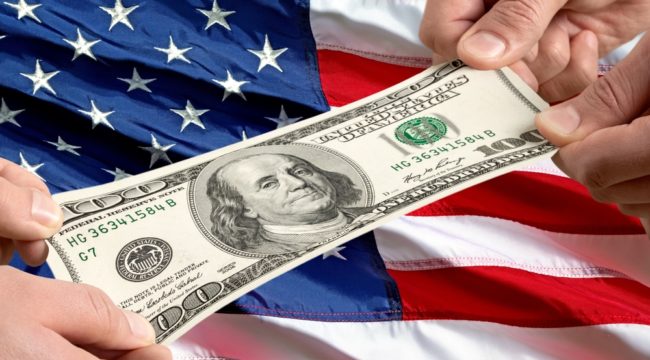The Great Tug of War Behind Today’s Market
Our hold on reality dangles by a fraying thread… and the psychologist’s couch awaits.
The stock market is to blame.
Consider…
The recent correction was (at least in part) triggered by rising long-term interest rates.
Yields on the 10-year Treasury nicked 2.88% on Feb. 5 — a whisker from the 3% red line many feared could send stocks on a merry fall.
That is the point at which debt begins to weigh… and investors seek higher returns in the bond market.
But the 3% theory came in for hard sledding last Wednesday…
The 10-year yield glided right past 2.88% — all the way to 2.92% — and that much closer to the red line.
How did stocks take it?
With a hearty belly-laugh.
The Dow Jones ended last Wednesday 253 points higher.
The S&P closed 36 points higher; the Nasdaq 130.
Hence our psychic distress… hence our pending journey to the head shrinker.
As we noted in gobsmacked amazement:
Stocks roared even as 10-year yields eclipsed the mark that supposedly triggered last week’s sell-off… How could this be?
It “does not add up,” read analysis from One Bank, also floored.
Desperate for answers, we suggested that falling volatility — yes, falling volatility — may have won the day for stocks.
Stocks have leapt to record highs recently as volatility has sunk to record lows.
And for reasons likely technical in nature, VIX — Wall Street’s “fear gauge” — fell steadily last Wednesday.
It ended the day beneath 20… miles below the 38.8 spike that threw markets into retreat Feb. 5.
We even sucked a hypothesis out of our thumb as a result…
A tug of war between VIX and the 10-year yield may determine the course of the market this year.
If VIX stays below 20, stocks win.
If the 10-year yield crosses 3%, stocks lose.
We admit, our theory may contain a hole or two — or 327.
But we grope in darkness… as we must in these unlit days.
And our fragile psyche requires some explanation, some tethering to reality, however tenuous.
Today offered another experiment for our theory…
Ten-year Treasury yields spiked again this morning — briefly to 2.93% before settling around 2.90%.
Why?
The United States Treasury is floating a record $258 billion in government bonds this week.
Recall, Congress recently agreed to a spending resolution that raises federal outlays $300 billion over the next two years.
Also recall that Congress recently passed Trump’s tax cuts.
The result is what high-falutin men call a shortfall. And Uncle Sam needs to make the shortage good.
But with the new flood of bonds up for sale — and its implications — bond holders are demanding higher yields in compensation.
Reuters:
Analysts worry the combination of a rising budget deficit, faster inflation and more Fed rate increases have ratcheted up the risk of owning Treasuries.
Here is your explanation for today’s surging 10-year yield.
Did our VIX versus the bond market theory withstand the day?
Largely… yes.
The Dow Jones fell triple digits early in the day as 10-year yields swelled.
It ended the day down 255 points.
The S&P and Nasdaq likewise ended in red.
But the numbers conceal a greater story…
After opening lower, the indexes rallied late morning.
The Dow crept close to even by noon.
Both the S&P and Nasdaq were flashing green at the same time… before losing their steam later in the day.
Which brings us to the rival party in our tug of war, the all-important VIX…
The fear gauge tracked closely with today’s swings of the market — in support of our theory.
VIX spent much of the morning north of our proposed 20 red line, peaking at 21.32.
But beginning at 10:30… its began a steady fall.
By late morning, VIX once again slipped beneath the 20 mark.
Not coincidentally — we argue — the major indexes began climbing as VIX was falling below 20 late morning.
But around 2:30, VIX reversed course.
By 3 o’clock it was above 20 once again.
And on cue, all three major indexes fell as VIX surged higher in the afternoon.
Meantime, the 10-year yield ended the day higher, at 2.89%.
Thus the bond market wins today’s round — stocks closed lower when the 10-year rose.
One day does not a theory make, of course.
And as the logicians tell us, correlation does not imply causation.
Perhaps we’ve confused the horse for the cart… and VIX falls because stocks rise… not the other way around.
But as we proceed in darkness, we find refuge in the possibility that we may have detected a faint glow of explanation.
If that flicker fades, if our theory collapses… our totured sanity goes with it.
Little remains as it is…
Regards,
Brian Maher
Managing editor, The Daily Reckoning



Comments: